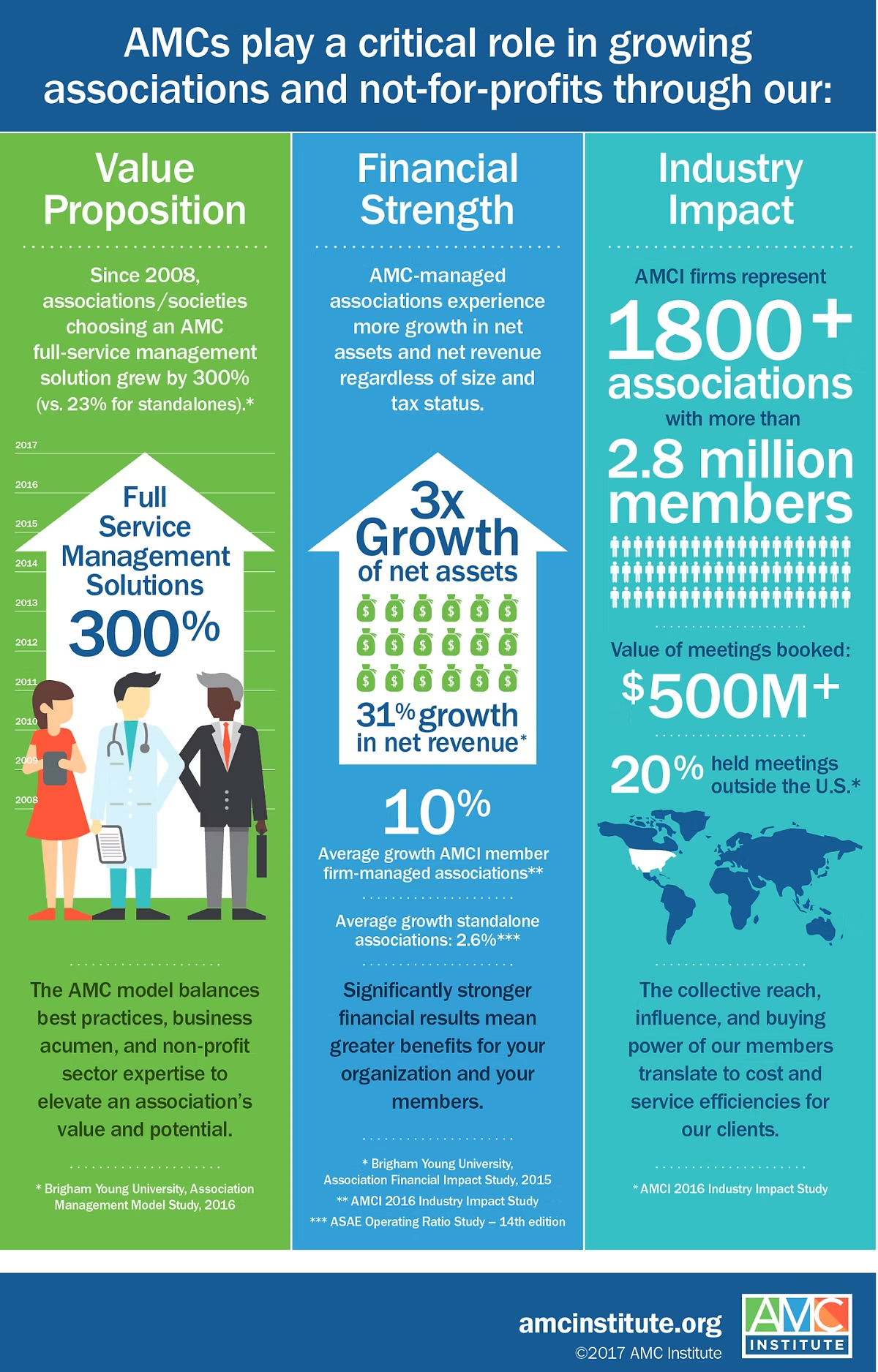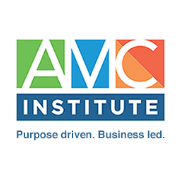What's an Association Management Company (AMC)?
Association Management Companies (AMCs) support associations reach their goals by providing essential services and infrastructure. Rather than hire their own staff directly, an association may partner with an AMC to provide staff and services. The benefit of this model is access to expertise at fractional rates, shared services, and economies of scale.
Momentum works with 501 (c) 3 and 6 associations, including individual professional societies and trade associations. Our team supports associations across various industry sectors, including science, healthcare, professional services, higher education, and travel/leisure.
Partnering with an Association Management Company (AMC) is not just about reduced costs, its about access to a larger network of expertise and resources. AMC's can provide a range of services.

Understanding AMC Fee Models: How Association Management Companies (AMC) Structure Their Pricing
When an association begins exploring the benefits of outsourcing to an AMC—short for Association Management Company—one of the first questions that arises is: how much does it cost? The answer isn’t always straightforward, because fee models in the association management world are intentionally designed to be flexible, scalable, and aligned with each client’s needs.
An Association Management Company typically provides a bundled suite of services—ranging from executive leadership and membership management to financial oversight and marketing—under one operational umbrella. But how those services are priced can vary greatly between AMCs, depending on the scope, complexity, and level of engagement the association requires.
In this article, we’ll break down the most common fee structures used by AMCs, explain how Association Management Companies balance cost with value, and offer insight into how associations can make the most informed decision when evaluating proposals.
The Most Common AMC Fee Models
Full-Time Equivalent (FTE)-Based Pricing
Many Association Management Companies use an FTE-based model to structure their fees. This approach aligns staffing with the association’s workload and assigns a percentage of dedicated personnel (e.g., 0.25 FTE for an Executive Director, 0.5 FTE for a Membership Manager).
The AMC calculates the cost of those staff allocations based on salary, fringe, overhead, and a management fee (or profit margin). This method is highly transparent and scalable—it allows associations to understand what level of staffing they are getting and what it costs.
Best for: Associations that want clear alignment between hours worked and dollars spent, and those that anticipate changes in staffing over time.
Flat Monthly Retainer
Another popular fee model used by Association Management Companies is the retainer model—a flat monthly fee that covers a defined scope of services. This offers predictable budgeting for the association and simplifies invoicing.
Retainers are typically based on estimated staff time, anticipated workload, technology costs, and management oversight. Many AMCs revisit the retainer amount annually to ensure it aligns with changing needs.
Best for: Associations seeking predictable costs and a long-term partnership with an AMC that handles a broad set of responsibilities.
À La Carte or Project-Based Pricing
Some AMCs offer à la carte services for associations that only need help with specific areas—such as event planning, website redesign, or strategic planning. These services are typically priced as one-time fees or hourly rates.
While this model lacks the continuity of full-service management, it’s a good fit for associations looking to augment existing staff or test-drive working with an Association Management Company before entering a deeper engagement.
Best for: Associations with in-house staff that need targeted support or short-term expertise.
Hybrid or Tiered Models
In many cases, Association Management Companies offer hybrid fee structures that blend multiple pricing methods. For example, an AMC may charge a flat retainer for core services, but layer in separate pricing for event management, credentialing, or marketing campaigns.
This model gives associations flexibility while still maintaining budget control—and allows the AMC to tailor services without being constrained by a rigid scope.
Best for: Associations with complex or seasonal needs that don’t fit neatly into a single model.
What's Included in AMC Pricing?
No matter the pricing model, fees from an AMC typically include:
- Access to a cross-functional team (executive, admin, finance, marketing, etc.)
- Use of the AMC’s infrastructure (phones, technology, office space, insurance, etc.)
- Project management and board support
- Strategic consultation and operational execution
What’s not always included (and should be clarified in any proposal or agreement):
- Hard costs (printing, travel, postage)
- Third-party vendors (legal, audit, software)
- Pass-through expenses (venue rentals, AV, etc.)
Key Considerations When Comparing AMC Proposals
- Understand what you’re really paying for: Are the services bundled or broken out? Are you paying for time or for outcomes?
- Don’t just compare cost—compare capacity: One Association Management Company might propose 1.0 FTE of support, while another offers only 0.5 FTE at the same price. Dig into the staffing allocations and ask for a sample org chart.
- Look for alignment with your mission: The right AMC isn’t always the cheapest—it’s the one that understands your goals, culture, and growth potential.
- Ensure transparency and flexibility: Make sure the AMC is clear about how fees are calculated, what happens if your needs change, and how often pricing is reviewed.
Why AMC Pricing Often Costs Less Than In-House Staffing
Many associations are surprised to find that AMC pricing is often more affordable than hiring a full internal team. That’s because Association Management Companies offer:
- Economies of scale (shared infrastructure across clients)
- Expertise on demand (you only pay for the roles you need)
- Built-in redundancy (no need to hire back-ups for every function)
- Reduced administrative overhead (payroll, HR, benefits, etc.)
When you factor in the true cost of internal staffing—salaries, benefits, turnover, recruiting, training, and tech—the AMC model becomes not just a cost-effective solution, but a strategic one.
Final Thoughts: Choosing the Right AMC for Your Budget and Mission
There’s no one-size-fits-all approach to AMC pricing. The best Association Management Companies will customize their fee structure based on your association’s goals, size, complexity, and pain points.
The key is to view AMC fees not just as a line item, but as an investment in expertise, infrastructure, and long-term stability. When structured correctly, your AMC should deliver more than services—it should deliver capacity, clarity, and measurable value.
Frequently asked questions
Does an AMC only do Full-Service Management?
No, an AMC can provide a range of services, including Full-Service Management. Some Associations engage an AMC in an outsourced or hybrid model, where only select services are contracted.
Can I have my own Executive Director?
Associations can employ their own Executive Director outside of an AMC, OR they can be assigned one by their AMC partner.
Are AMC's only for small associations?
No! AMC serves a variety of associations, including large ones. It's all about finding the right fit and services that meet your association's needs.

